Indian Spitz at a glance
| Names | Status | Origin |
| VULNERABLE | India |
| Physical Traits |
|
The Indian Spitz dog
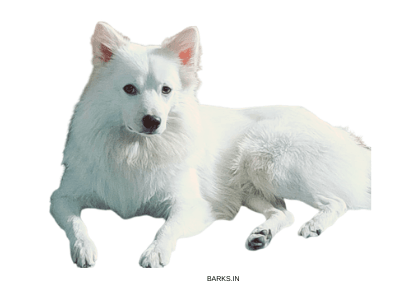
The Indian Spitz is a native Indian dog that belongs to the Spitz-type of dogs. The Indian Spitz dog is popularly known as the Pomeranian dog in India, even though they are not related. Indian Spitz dog is the most popular native dog in India. One can find them throughout the Indian subcontinent.
Technically, the Indian Spitz dog is not native to India. These dogs were German Spitz brought to India by the British. The British crossed the German Spitz dog with Indian Pariah dogs to make them more adaptable to Indian conditions.

The Indian Spitz is small, alert, and vocal, which makes them excel as an indoor guard dog. During the 1980s and early 1990s, the Indian Spitz was the most popular dog in India. Their adorable looks and loving character made them a highly sought after companion dogs.
The Indian Spitz dog is well suited for apartment living and does well with a moderate amount of exercise. They make excellent family pets. People say, “once an Indian Spitz fancier, always a fancier.” These dogs have a remarkable ability to understand and bond with their human family.
History of Indian Spitz Dog
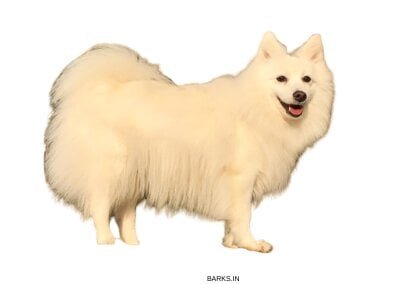
Unlike most other native Indian dogs, the Indian Spitz is not an ancient dog breed to originate in India. Finding the origins of this dog should be straight forward. However, to our surprise, there are no records of how this dog came to India.
So we turned our attention to investigate this dog to see if we can pinpoint the “Spitz dog” ancestors of the Indian Spitz. We used the following approach to carry out our investigation.
- Searching through the internet
- Interviewing native dog experts
- Reading old newspaper articles
Searching the web did not provide the answers. All that we could find was a bunch of blog posts that said this dog was introduced by the British to India.
We went through books by the British during the late 1800s and early 1900s. We could not find any references. Then, we turned our attention to old newspaper archives. The newspapers had the answers we were seeking.

- As early as 1879, Times of India reports a dog show held in Bombay. The Pomeranian dog was part of the dog show.
- Another piece published in the Times of India talks about a Pomeranian dog belonging to a British regiment in India.
- We found several articles of Pomeranian dogs sent to India. These articles do not indicate who the recipients were but state that Poms were sent overseas to India.
From these reports, it is clear that several Pomeranians were brought to India by the British in the late 1800s. In the 1800s, Pomeranian dog referred to the German Spitz dog.
By looking at historical records, it is evident that the ancestors of the Indian Spitz came to India during, 1850 to 1870 period. The Spitz dog popularity brought these dogs to our shores. Since then, by crossbreeding with the Indian Pariah dog, these dogs have indeed become Indian.
Why is the Indian Spitz, also called the Pomeranian?

The Indian Spitz, even to this day, goes by the name Pomeranian dog or Indian Pomeranian. Technically the Spitz family of dogs is characterized by fluffy hair, pointed ears, and hairless muzzle. Pomeranian is a Spitz-type dog from Poland.
In the 18th century, German Spitz, Italian Spitz dog, or the Volpino Italiano, and Finnish Spitz were trendy in Britain. Queen Victoria owned several of this dog breed that she imported all across Europe. Pomeranian dog was the popular name for these Spitz family of dogs.
The purpose of the Indian Spitz

The Spitz-type includes dogs that serve multiple purposes. Such as,
- Working dog – Alaskan Husky is a Spitz-type working dog.
- Companion dog – Japanese Spitz is a Spitz-type Companion. The Indian Spitz is another example of a Companion dog.
- Toy breed – The Spitz family also includes toy breed of dogs such as the Pomeranian.
The indoor guard dog

The Indian Spitz is alert, has a shrill-bark, and is territorial. These traits make the Indian Spitz an excellent indoor sentinel. Like the Lhasa Apso, this dog breed excels as an indoor guard. Highly tuned senses, coupled with an alert disposition, the Indian Spitz is capable of chasing off intruders.
We want to remind our readers that this dog is also territorial, which makes them boisterous and loud dogs. A volley of shrill barks greets anyone who approaches this dog’s territory. You and your neighbors will have to get accustomed to waking up in the middle of the night.
The utility dog

Not many people know this about the Indian Spitz; this Indian breed is a famous circus dog. They are highly intelligent, and their small size and low body weight enable them to learn and perform amazing tricks. India’s renowned circus industry has always relied on the Indian Spitz dog and the Labrador Retriever.
An Indian Spitz, Tuffy, played a vital role in a classic 1994 hit Bollywood movie Hum Aapke Hai Kaun. Redo, a 6-year-old Indian Spitz, played a crucial role in the film. Interestingly the lead actress who worked with this dog adapted this dog after the movie.
This dog is versatile and intelligent, which makes them an excellent utility dog.
Family companion

The Indian Spitz, in most homes, is a family companion. People fell in love with this “English Kutta,” and they were the most popular dog in India in the 1980s and 1990s. Their snow-white coat, small size, low body weight, intelligence, and adaptability made them prized companion dogs.
This toy breed is a loyal and loving dog, and they are good with kids, well-suited for small apartment living, and compatible with other pets. If you are looking for a little companion dog that can thrive in Indian weather, choose this dog. Of all the Indian dog breeds, this dog is the best pet for the family.
The current status of Indian Spitz
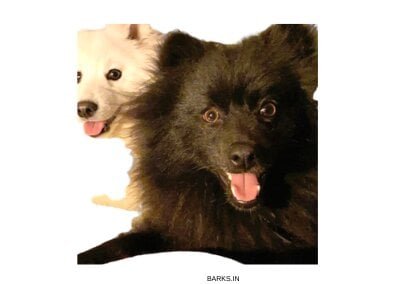
The current state of Indian Spitz is no different from other native Indian dog breeds. Their popularity is declining, and people choose dogs such as the Lhasa Apso or the expensive Samoyed. We assess their current state as vulnerable. With help, this dog can make a comeback.
We believe it the responsibility of blogs such as barks.in to make the right information available. Once a person understands the true nature of these small dogs, he/she will be empowered to make the best choice.
Import of non-native dogs

Today, everyone wants a Labrador or a Samoyed dog or other non-native dog breeds. An influx of dog imports is pushing this Indian breed towards extinction. While the Indian Spitz is also an introduced dog, 100s of years of selective breeding have made these dogs Indian and a separate breed.
We want to remind our readers that not all foreign dog breeds are compatible with Indian conditions. In our opinion, all dogs are great, however, for their well being choose ones that adapt well to our weather.
Neglect and lack of international recognition

Lack of international recognition from Federation Cynologique Internationale (FCI) is another factor that affects these dogs. There are no international Kennel Clubs such as the American Kennel Club or the United Kennel Club that recognize the Indian Spitz. These beautiful dogs are neglected at home and ignored internationally.
Physical traits of the Indian Spitz
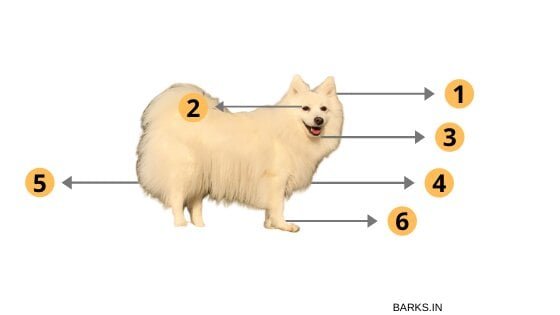
Establishing a breed standard helps breeders maintain the quality of the overall breed. It also helps potential pet owners identify the correct dog for their family.
Our readers should kindly note that the Kennel Club of India does not officially recognize these standards. There are no published guidelines or breed standards for this dog. This breed standard is our earnest attempt to help revive this dog.
General Appearance
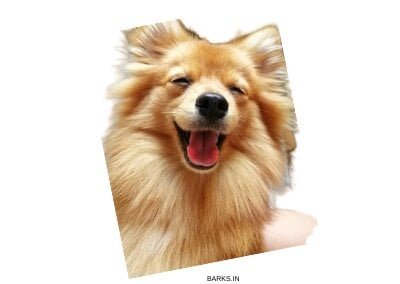
The Indian Spitz is a small-sized dog that is compact, is proportionally sized, and has a fluffy coat. Unlike its European counterparts, this dog has slightly shorter hair.
The general appearance of the Indian Spitz has to be proportional. The length of the body from shoulder to thigh should be equal to the height at withers.
Head

The head should indicate the dog’s alert disposition. The muzzle is sharp, muzzle joins the head with a stop. The muzzle is shorter than the skull of the dog.
The nose should be on top of the dog’s muzzle and should not protrude beyond the lips. The nose is always black. The dog should have an even bite. The eyes of this dog is round, dark, and with a black eye rim. The lips, eyes, and nose should all be black.
The ears are set high and are close to each other. They must have erect, and triangular pointed ears. Floppy ears are a severe fault. The coat on the muzzle and ears is short and smooth.
Body

The body of the Indian Spitz is square. These dogs have a straight topline. The legs are parallel to each other and straight with a deep chest and a moderately tucked abdomen.
The tail of the Indian Spitz must curl over the back of the dog. Short or straight tails constitute a significant fault. The female is has a lower body weight than a male.
Coat and Colors

The individual hair is straight, and long giving the dog a puffed-up appearance. Their hair is not soft or flowing, and hair should be harsh and standing. The fur on their neck should give an impression of being wrapped in muff.
The Indian Spitz has three solid colors, they are.
- Snow white
- Dusky Brown
- Black
The most common color is white. Mixed colors are a fault.
Indian Spitz and its variants
The Indian Spitz has adapted to Indian conditions. As a result, the dog that we see today has distinct traits from its European ancestors. This dog occurs in three beautiful colors.
White Indian Spitz
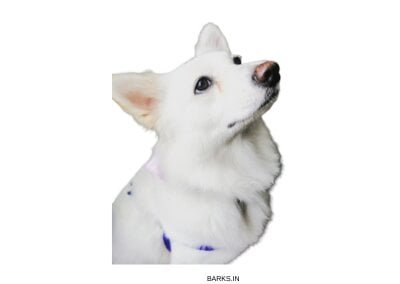
The white Indian Spitz is the most common among the three. They are beautiful. The notable feature of this dog is their round black eyes, nose, and lips. Black stands out amidst the fluffy white coat.
Black Indian Spitz

The black Indian Spitz is the least common among the three. This dog is entirely black as midnight. They have round black eyes, a black nose, and black lips.
Brown Indian Spitz

The brown or almost orange or dusky brown Spitz is the least common among the three. This dog, too, has black eyes, lips, and nose.
The temperament of the Indian Spitz

The Indian Spitz has a feisty character. Their cute looks should not deceive one. This dog is aloof and works based on mutual respect. They are not the type that is eager to please no matter what. The only way to earn their trust is through mutual respect.
This dog is intelligent and can understand people’s minds. These dogs are capable of modifying their behavior depending on the mood of their master. They are playful, happy when their master is happy, and are solemn if their master is sad.
We recommend proper training while they are young to avoid resource guarding in this dog. Remember, these dogs are territorial and can assume pack leadership. Without adequate training, these dogs can become aggressive. These dogs are also known to bite.
Care of the Indian Spitz
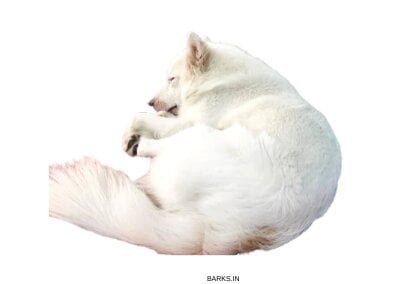
The Indian Spitz is well-suited for Indian conditions. They are sturdy dogs with excellent disease resistance. The average life span is 12 years, and they remain active most of their doggy years.
The fluffy coat of the Indian Spitz requires regular grooming. Being active dogs, they tend to get dirty. We recommend daily grooming coupled with once in two weeks’ bath.
The Indian Spitz does not need any commercial dog food. Most people who own these dogs provide them with homemade food. We have also known these dogs to live in vegetarian and egg-based diets.
Overall the Indian Spitz is an excellent family companion that thrives in Indian conditions.
Essential aspects of Indian Spitz’s care
As pet-parents, it is necessary to understand our dogs fully. The Indian Spitz’s coat requires special attention. We hope the below section helps you know your dog’s specific needs better.
Shedding
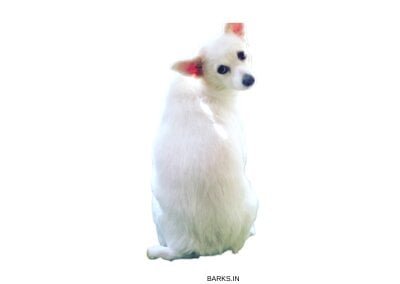
The Indian Spitz’s hair is fluffy and upright and does not float in the air. This dog sheds its coat, including the dense inner fur, twice every year. Shedding happens over 2 or 3 weeks. During this period, the dog loses its inner hair completely. With daily grooming and proper care, managing their hair is natural.
Can I get allergies from the Indian Spitz?
The risk of Indian Spitz’s fur, causing an allergic reaction in people, is quite low. Dog’s dander and flakes cause allergies in people. The Indian Spitz is not a hypoallergic dog. However, it does not mean you can get allergies from this dog. Daily grooming and care help to keep your dogs free of dander and flakes.
Grooming needs of the Indian Spitz
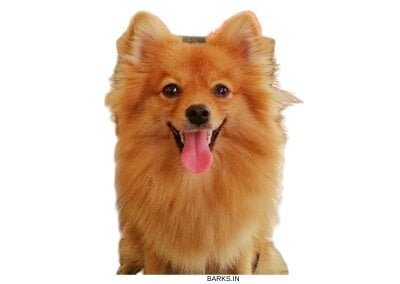
Any dog with long hair needs grooming. The Indian Spitz is no different. These dogs have fluffy, straight hair that will require your attention. Unlike other dogs, grooming the Indian Spitz is relatively easy.
Grooming also helps remove debris that gets lodged into their hair. The grooming process helps you in several ways, such as.
- Helps maintain the dog’s hair
- Close interactions with your dog increase the bond between you and your dog
- Long hairs on the Indian Spitz will hide minor wounds or infections. Grooming them will help you monitor your dog’s health more closely.
We recommend that you have a daily grooming routine. These are small dogs, and you will need to spare just 10 to 15 minutes each day.
Getting the dog accustomed

The best time to start grooming is while your Indian Spitz is a puppy. Remember, the Indian Spitz is no pushover. Make the grooming process enjoyable for your dog. Start slowly, introduce the dog to its brush. Give them treats when you are getting ready to handle them. Dog’s love when you appreciate them and pat them.
These little things will teach the dog to enjoy the grooming process, at the same time, help you unwind from your daily chores. We love to spend time with our dogs, and our dogs love it when we spend time with them.
Dealing with mats and tangles

The Indian Spitz has straight hair, the chance of mats and tangles are less. However, all long-haired dogs are prone to tangles. Follow these steps to manage tangles gently.
- When you hit a mat or tangle, gently comb through it with a downward motion.
- If this does not work, you can use tools such as mat-splitter, and tangle tweezer to break up tangles.
- For dealing with intricate knots, use a grooming spray.
If you establish and follow a daily grooming schedule, you will not have to contend with issues of mat or tangles.
Exercise requirements of the Indian Spitz
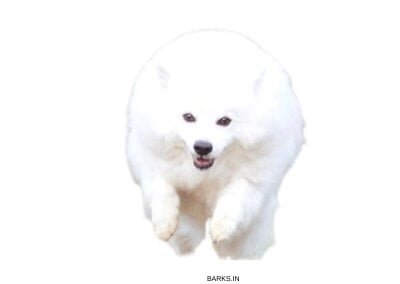
This dog is alert and active. Despite their small size, these dogs need regular exercise. Their ancestors were working dogs. Take your dog for a walk each day. They are not well-suited for jogging or intense workouts.
A 15 to 10-minute walk should keep your Indian Spitz in top condition. Learn how to walk your dog. The proper way to walk your small dog is to use a leash and a collar that fits their size. Carry some treats along with you. You can use it to reward good behavior while walking.
The trainability of the Indian Spitz
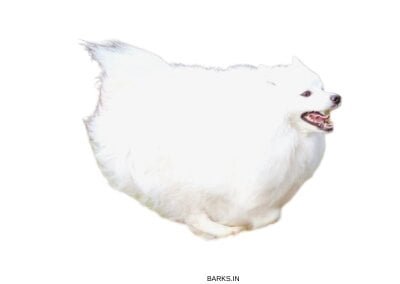
This dog is highly intelligent and easy to train breed of dogs. Spitz-type dogs, specifically the smaller ones like the Indian Spitz, can be taught to perform tricks.
The Indian circus industry has relied on this dog for many years. Trainable, adorable, and intelligent, these dogs are truly versatile. When training, it is vital to understand your dog’s mental character. Not all dog breeds are the same; aligning your training methods to suit your dog will make it fruitful.
We recommend positive reinforcement training, it works the best for this dog. It is a simple method. Divide the entire training into smaller and more manageable steps. Every time the dog obeys a command, reinforce the positive behavior with a treat or something that the dog likes.
Nutritional needs of the Indian Spitz

The Indian Spitz is a small dog, as pet-parents we to plan their nutrition based on their size. Small dogs need about 80 calories for every 1 kg of their weight. Please note, this is just a rule of thumb. The nutritional needs for your dog depend on several factors such as age, activity levels, type of food, etc.
This dog has adapted to the Indian way of life. They thrive in homemade food. Remember to avoid spicy food for dogs. Chicken, veggies, eggs, rice, etc. are an excellent choice for these dogs.
Diet chart for Indian Spitz
Follow the simple diet-chart below for your dog.
| Age | Weight (kg) | Quantity in grams | Meals |
| 2 months | 1 to 2 | 50 to 75 | 4 |
| 3 months | 2 to 3 | 75 to 100 | 3 |
| 6 months | 3 to 5 | 125 to 250 | 2 |
| Adult | 7 to 9 | 250 to 300 | 2 |
Health issues

This dog is accustomed to Indian weather and is a disease-free dog. The following are some commonly seen health issues with this breed of dog.
- Seizures: Seizures are life-threatening and frightening convulsions that occur in dogs. Seizures are electrical misfiring in the brain that causes the suffering animal to lose control. Consult your vet if you notice seizure in your dog.
- Hypothyroidism: In this condition, the body doesn’t produce enough thyroid hormone. The symptoms include dry skin and coat, hair loss.
- Mange: A microscopic mite infestation causes Mange in dogs. The signs include hair loss, itchy skin, and other skin related issues.
- Patellar Luxation: This is another joint-related issue that affects this dog. The knee slips out of its socket, causing the dog to lose its balance.
- Keratoconjunctivitis Sicca (Dry eyes): Some dogs have dry eyes. The lack of aqueous tear causes their cornea to become dehydrated. Keep the hair out of their eyes to prevent this.
- This dog, when left alone, suffers from separation anxiety.
Natural remedies for Indian Spitz
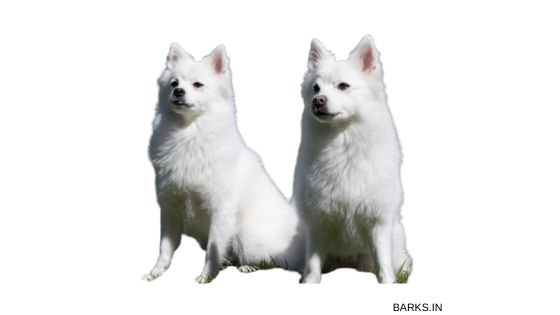
The Indian Spitz is resistant to most canine diseases seen in India. Below are some home handy home remedies that can be a useful first line of defense. You can read about home remedies for dogs in our detailed post.
- Dermatitis: Treat Dermatitis with a mixture of crushed Aloe Vera mixed with coconut oil and apply it over the dog’s body.
- Deworming: Young Neem leaves are crushed and then ground into a paste. This paste is rolled into pill-sized balls and dried in the sun. Feed one pill for adults and puppies feed half.
- Cuts: Treat cuts and minor injuries with a paste made out of turmeric and coconut oil. Watch out; turmeric is bright yellow, your white dog will be yellow for a few days. Turmeric is washable in water.
Interesting Facts about the Indian Spitz
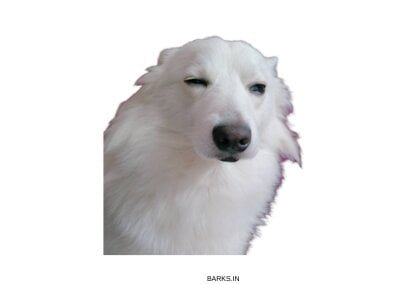
- This dog has European ancestry. They are descendants of either the German Spitz or the Volpino Italiano dogs.
- This dog was introduced by the British in India between 1850 to 1875.
- Since they were introduced by the British, these were called “English Kutta” or the Englishman’s dog.
- This is a famous circus dog. They can learn and perform many tricks.
When to choose an Indian Spitz?
People adopt this dog for the reasons below.
- People adopt these dogs while needing a companion dog that is well-suited for Indian weather.
- A dog that has excellent disease resistance and is care-free.
- A dog to live as a companion in their apartments.
- As an indoor sentinel, to protect homes and as an indoor guard dog
How to identify the original Indian Spitz?

This dog belongs to the Spitz-type dog. They occur in snow white, black, and brown colors.
We urge you to read about these dogs in this post. Learn how to identify them by going through the breed standards. Before choosing this dog, you should understand their temperament. These dogs are small, alert, and are excellent companions.
What is the price of Indian Spitz?
The table below is a comprehensive city-wise price list for the Indian Spitz dog. All pups are in two categories.
- Pet quality – Pet quality pups are dogs that have some minor faults in them that are typically not noticed. For instance, dogs with overshot or undershot jaws. These are faults in the show ring. These are so minor that most pet owners will not notice it.
- Show quality – Show quality dogs are meant for the show ring and are more expensive than the pet quality puppies. Remember, pet quality and show quality pups can be from the same litter.
Indian Spitz price list by city
We want our readers to note, most (90%) pet owners cannot differentiate between pet and show quality pups. Unless you are planning to show your dogs, pet quality dogs should be perfect.
Recommended Reading: Dog prices in India
| City | Pet Quality | Show Quality |
|---|---|---|
| Chennai | ₹3000 to ₹6000 | ₹8000 to ₹18000 |
| Delhi | ₹4000 to ₹8000 | ₹10000 to ₹18000 |
| Guwahati | ₹2500 to ₹5000 | ₹7000 to ₹15000 |
| Kolkata | ₹3000 to ₹6000 | ₹8000 to ₹15000 |
| Mumbai | ₹4000 to ₹8000 | ₹10000 to ₹18000 |
| Odisha | ₹2500 to ₹5000 | ₹7000 to ₹15000 |
| Patna | ₹2500 to ₹5000 | ₹7000 to ₹15000 |
| Pune | ₹2500 to ₹5000 | ₹8000 to ₹18000 |
Where to buy an Indian Spitz?

When buying an Indian Spitz, choose a breeder who cares more about the breed than money. Never buy dogs from people whose sole intention is profit for the following reasons.
- Someone who is a breeder of profit will not care about well being of their dogs. The quality of their dogs will be questionable.
- Some breeders run puppy mills where dogs they keep their dogs in confined spaces and without proper care.
- Poorly treated dogs tend to be aggressive and nervous.
Choose a breeder who has experience in working with these dogs. Visit dog shows and meet breeders and their dogs. Before buying a pup, visit the breeders home see the dog’s parents.
How can I save the Indian Spitz?
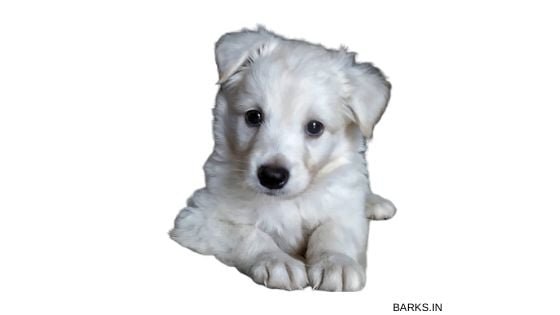
You can do any one of the below.
- If you are looking for a companion dog, then choose this dog over a Lhasa Apso.
- Promote them on social media. All of us have a social presence; sharing articles creates awareness and dispels misinformation.
- Visit dog shows and encourage the native dog breeders.
Conclusion

In our opinion, Indian Spitz is the best companion dog in India. They are cute, alert, and well-equipped to thrive in Indian conditions. If you are looking for a dog that can live with you in your apartment and be an excellent companion for kids, then choose this dog.
We urge our readers to choose a native dog as their next dog. If you are unable to, the least you can do to save them is to share this post on social media to increase awareness. Native dogs need your help!

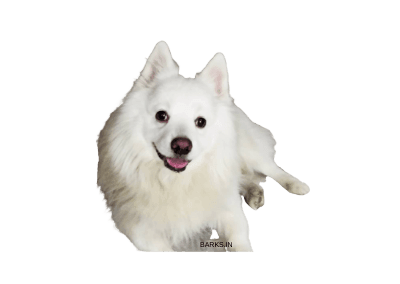
Interesting read.
Hi Raj,
Thanks for your reading our posts. Rajapalayam dog’s need help to survive. Please choose a native dog as your next dog.
Thanks
Robert
Hii
Very informative and good post. I have a 4 (nearly) 5 year Indian spitz NAME- IGLOO. All the characters mentioned here exactly match my dog. This breed is very intelligent and cute. Thanks for this brief description. My dog considers himself a part of the family and we treat him like one. He’s my true brother and very precious. I love dogs♥️🐕🐩
Hi Dev,
Thanks for reading our post.
Yes, the Indian Spitz barks quite a bit. The good thing about them is that they are intelligent and can be taught not to bark. The best way to teach them is to use reward based training. You can watch videos on training your puppy by Kikopup (Youtube channel for dog training. You can also consider dogs that don’t bark as much.
Thanks
Robert
Hi Miriam,
Thanks for reading our post. There is no set standard when it comes to a puppy’s weight. 5kgs for a 5 month old puppy does not sound overweight. As long as the puppy is active I will not be worried.
Thanks
Hi Mak,
Thanks for reading your post. Indian Spitz by nature are barking dogs, you can train them to stop barking on cue (command). However, stopping them from barking might be challenging.
Thanks
Hi…..Thankyou for the informative and detailed writing….Read ur article with my 2 month old indian spits on my lap
Hi Teena,
Thanks for reading our post. We are delighted that you found it useful
Hiee can I feed milk chapati for my Indian spitz female dog
Hi,
You can feed curd + chapati to your dog once in awhile. Dont make it a regular meal.
Hi, I am having a female Indian Spitz 4 Months old and weighing 4.65Kg. At present I am Feeding her only Drools Puppy Feeds 1 40Grams 4 times a Day. Multi Vitamin and Deworming her every month. I would like to know if the Feed Dosage is correct or should I make any Changes. Also her vaccinations are up to date as per schedule. I want to her in the best state of Health. Thanks in Advance.
Hi Ramesh,
Sorry for the late reply. There is formula on what is correct VS incorrect. I am generally against feeding vitamin supplements to dogs. As long as their food is good quality there isnt a need to feed supplements.
Hi Cel,
Thanks for your kind words! There are a few places in India where Indian Spitz are used as farm guard dogs. We don’t use them for herding but they are an excellent guard dog.
I think this is one of the most significant pieces of information for me. And I’m glad read your article. Thank you for sharing! The funny appearance and cheerful character make the Pomeranian puppy in Pune a wonderful pet, which is famous for its kindness and patience.
Hi , thank you for such an informative article on this breed. My. 7 yrs old brown Indian spitz named Piku just got diagnosed with obesity yesterday. He weighs 19 kgs 🙁 could U pls make some suggestions or a weight loss program
Hi Subi,
I am really sorry to hear that. The good news is that, you can manage obesity. My number 1 suggestion is to increase Piku’s activity level. Take him for long walks or let him run loose in a park. You can also see if you can find a doggy friend for him. Stop feeding him human food, don’t feed him from your table. Most of all be patient, don’t overdo anything. Have monthly goals (not daily goals). Hope some of these suggestion help
Thanks
Benjamin